Paleobiogeography

Breakup of Pangaea
The Mesozoic was characterized by major changes in the connections and distributions of landmasses on the Earth’s surface due to tectonic and eustatic changes, as shown above. The reorganization of continental landmasses likely had a profound effect on organisms that had continent-scale distributions, such as dinosaurs.
Paleontologists have long recognized the general effects of plate tectonics on dinosaur evolution. Early in the dinosaur era, when landmasses were interconnected, dinosaur faunas show relatively little provincialism. For example, coelophysoid theropods in China, southern Africa, and western North America look strikingly similar. Herbivorous prosauropods from these same three locales likewise closely resemble one another despite their geographic distance. By the end of the dinosaur era, in contrast, dinosaur faunas on each landmass are distinct. The timing and nature of faunal differentiation remains a focal interest of dinosaur researchers, but relatively few have approached the problem quantitatively (e.g., Upchurch et al. 2002).
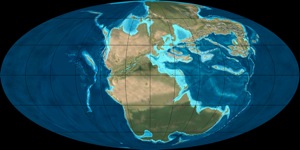
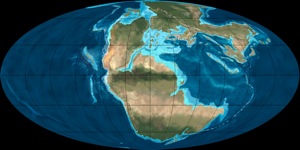
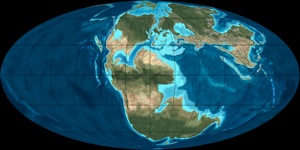

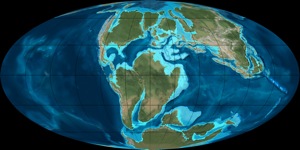
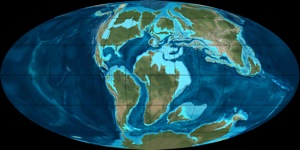
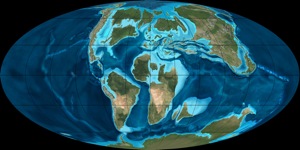
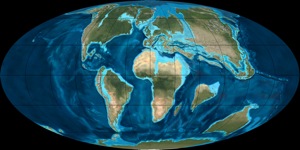
65 mya
90 mya
105 mya
120 mya
220 mya
200 mya
170 mya
150 mya
Questions
Our proposed phylogenetic analysis of Titanosauria will be an important addition to studies of dinosaur paleobiogeography because titanosaurs occupied all landmasses except Antarctica and diversified during peak Mesozoic continental fragmentation. We will be able to compare area cladograms generated for all or for subsets of titanosaurs with those of other dinosaurs to investigate general patterns in dinosaur paleobiology, and we will be able to address certain questions that are pertinent to titanosaurs.
For example, Bonaparte (1999) suggested that initial rift between Gondwana and Laurasia was important in shaping the distribution of titanosaurs (among other organisms). If this were true, we would expect area cladograms to show separate Gondwanan and Laurasian lineages. We could also investigate the presence of lower level patterns, such as the geographic isolation or India throughout the Jurassic and Cretaceous, an early Cretaceous connection between Europe and Asia (e.g., Upchurch et al. 2002), or the early isolation of Africa from other Gondwanan landmasses.










species
1 2 3 4 5 6
landmass
A D C B






landmass
A C B A D D

area cladogram - phylogeny
area cladogram - tectonics
species cladogram
An area cladogram can be created from a species cladogram by replacing taxon names with the areas they occupy (above). The timing and pattern of branching events in taxon area cladograms (above right) and landmass area cladograms (below) can be compared to assess the effects of tectonics on evolution.
Common currency for Paleobiogeographic analysis
If indeed tectonic transformation of landmasses had profound effects on dinosaur evolution, then its evidence should manifest independently in clades. That is, a tectonic signal should appear in the evolutionary history of distinct groups. In order to identify this signal, we need a common currency to compare tectonics and phylogeny. Fortunately one exists – both the breakup of Pangaea into its constituent landmasses and the phylogenetic descent of organisms through time can be represented as branching diagrams. If we replace the species of a phylogenetic analyses with the landmasses they inhabited, we create area cladograms that can be directly compared area cladograms generated from geological evidence Pangaea (see below). Consilience in the patterns generated from phylogeny and tectonics indicates vicariance, whereas lack of agreement between patterns indicates either dispersal or differential extinction. Comparisons of phylogeny-derived and tectonics-derived area cladograms are straightforward, but there are several pertinent issues to consider, including how we (i) quantify similarity of pattern between two or more area cladograms, (ii) assess true absence of species vs. absence of appropriate strata, (iii) determine the phylogenetic and temporal scale of comparison, and (iv) incorporate temporal data.
